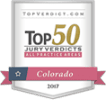Bicyclists in Colorado have a legal right to ride on public roads, but they are extremely vulnerable in collisions. Bicycle riders don’t have the protections offered by an automobile, such as airbags, seatbelts, and an enclosed passenger compartment. Cyclists face a greater risk of serious injury in a crash with a motor vehicle.
It is important for motorists to be mindful of how to share the road with cyclists in Colorado. The Wilhite Law Firm has compiled some information about sharing the road safely with cyclists.
What You Can Do to Share the Roads with Bicyclists
Motorists can do their part to share the road with cyclists and keep all road users safe by:
- Understanding cyclists’ rights and vulnerabilities – Under Colorado law, cyclists are legally considered vehicle drivers and have many of the same rights and responsibilities as other road users. However, cyclists also have unique vulnerabilities because they lack the same protections as people in automobiles. Motorists should watch out for cyclists and show them the same respect as other road users.
- Staying out of designated bicycle lanes – Bicycle lanes exist to give cyclists their own space and to make public roads safer for everyone. Unfortunately, some motorists park in bicycle lanes or drive through them to pass other vehicles. Do your part to keep your local roads safe for everyone by keeping out of bicycle lanes anytime you’re driving a motor vehicle.
- Making sure you understand cyclist hand signals – Cyclists must signal their intentions before turning or stopping. However, bicycles typically use hand signals rather than electric turn lights. Motorists should recognize the following hand signals, so they know what to expect of bike riders:
- Left-hand turn signal – Cyclists extend their left hands straight outward to warn others of their intent to turn left.
- Right-hand turn signal – Cyclists extend their right hands straight outward or raise their left hands upward at 90-degree angles to warn others of their intent to turn right.
- Stop signal – Cyclists extend their left hands downward at 90-degree angles to warn others of their intent to stop.
- Using caution when you turn or back up – When you plan to make a right-hand turn near a cyclist, do not try to race ahead and cut them off. When you intend to turn left, remember to check all lanes of opposing traffic for bicycles. When you back out of a parking space or driveway, check behind you repeatedly and move slowly to prevent possible rear-end accidents.
- Being careful when driving in the dark – Cyclists who ride early in the morning or at night are required to use lights and reflectors to make themselves more visible. However, cyclists may forget to use these safety features or experience malfunctions with their gear. It’s important to be careful when driving at night in areas where cyclists may be present.
- Paying special attention to children riding bicycles – Children riding bicycles are generally harder to see and less predictable than adult cyclists. Anytime you are driving near a young child on a bicycle, do your part to keep them safe by driving slowly, yielding the right of way, and waiting for them to cross the road safely when necessary.
- Minimizing driving distractions and obey all traffic laws – By avoiding distractions such as cell phone messages, you can keep yourself and everyone else on the road safer. It’s especially important to minimize distractions around cyclists, who tend to be harder to spot in traffic.
- Not assuming all cyclists can hear you – Cyclists in Colorado can legally wear headphones while riding, although it’s dangerous to do so. Headphones can make it harder to hear approaching traffic and increase the risk of an accident. As a motorist, you should never assume that a cyclist can hear you as you approach or expect them to yield the right-of-way before they see you.
- Allowing plenty of room when passing cyclists – When you pass a bicycle rider while driving a motor vehicle, you are required to allow at least three feet of space between your vehicle and the cyclist. This is to avoid crowding the cyclist off the road and to allow the cyclist plenty of room to maneuver. Be patient when passing a cyclist.
- Checking your surroundings before you open your car door – Dooring accidents are common incidents that involve cyclists being struck by car doors swinging open as they pass parked cars. To reduce the risk of dooring accidents, make sure you check your surroundings for oncoming cyclists any time you intend to open your car door on a public roadway.
What Should You Do If You Are a Driver Involved in a Bicycle Accident?
If you are involved in an accident with a bicycle rider in Colorado, take the following steps to safeguard the bicyclist’s health and to protect your rights:
- Check on the cyclist to make sure they are okay. If needed, contact emergency medical services or 9-1-1 to call for help.
- Gather the cyclist’s and any other drivers’ contact and insurance information and statements from any eyewitnesses.
- Seek medical attention for yourself if you suffered any injuries, even if they seem minor. Certain injuries may not be noticeable right away.
- Follow through on any treatment recommendations from your doctor to give yourself the best chance at recovery and demonstrate that you are taking your health seriously.
- Avoid sharing or posting anything on social media while your claim is pending.
- Contact a knowledgeable personal injury attorney for advice about your rights and the best next steps for your situation.
At The Wilhite Law Firm, our personal injury lawyers have helped thousands of injury victims in Colorado recover millions of dollars in compensation. We will do everything we can to help you, too. Contact us today to discuss the details of your Colorado bicycle accident case in a free initial case review.
















